Caveat: I am NOT a naval/marine engineer or an archaeologist. These posts cover various eras in history, many of which I have very little knowledge or expertise in, but I do my best to provide accurate information. In short, I’m no expert and I intend to focus on broad ideas.
Moving further along into history, we jump from the Pacific Ocean to the Nile River in Egypt. Part of the Fertile Crescent, ancient Egypt is famous for its Pharaohs, pyramids, and mummies. While it is probable that boat-building did occur earlier in Mesopotamia on the Tigris and Euphrates Rivers, in this post, we are going to examine the role of the Nile River, the boats that plied it, and the role of trade in ancient Egypt.
The Nile River
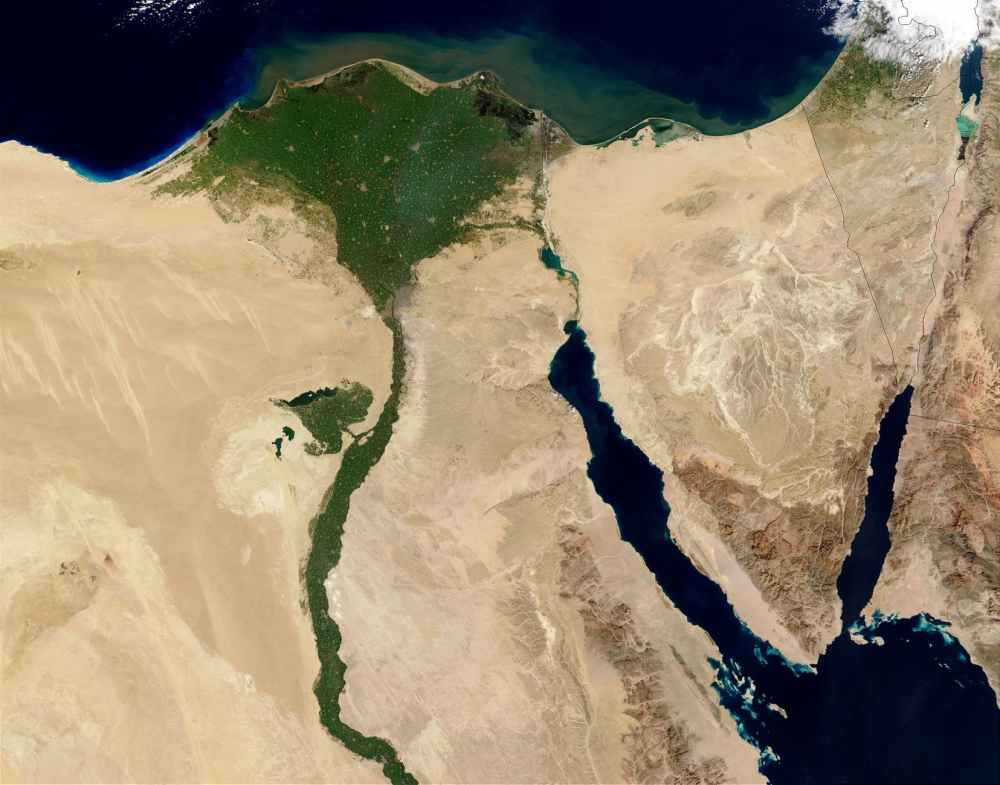
View from space of the Nile, Nile River Delta (note they are the only green areas and surrounded by desert), and the Sinai Peninsula.
The Nile River served as the lifeline of Egyptian civilization. Flowing north from the mountains in east-central Africa, the Nile is over 4,000 miles long. North of Khartoum, the river is broken by six cataracts (sets of rapids) with the northernmost First Cataract at Aswan. In ancient times, the First Cataract was a natural barrier between Egypt and northern Sudan to the south. North of Aswan, the Nile valley widens but is bordered by the Sahara on either side before discharging into the Mediterranean Sea.
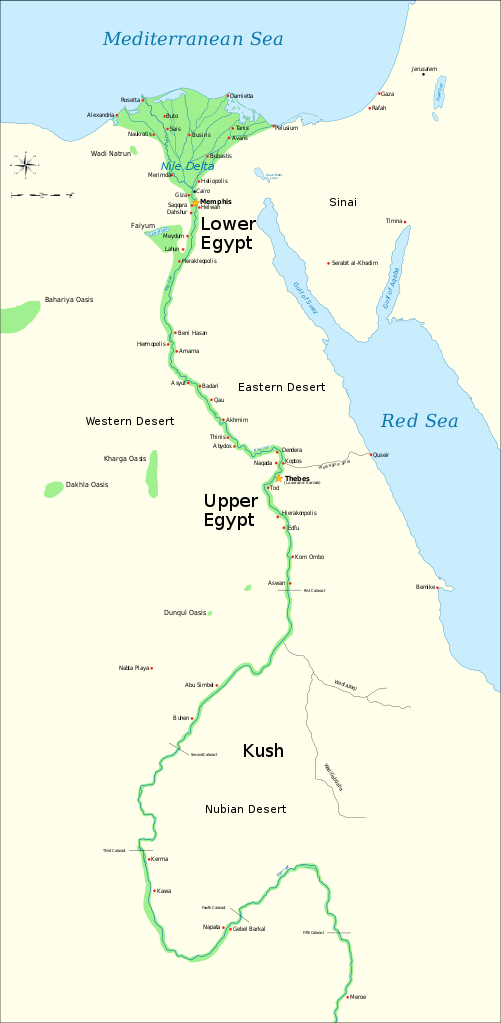
Ancient Egyptian civilization was dominated by the Nile and geographically divided into two regions called Upper and Lower Egypt. Upper Egypt consisted of the southern area roughly south of the First Cataract, deriving its name from the highlands where the Nile flowed from. Lower Egypt was defined by the Nile River Delta (Paine, 2013, p. 39). While the names may seem counter-intuitive, remember that they correspond to the direction of the flow of the Nile, not their true geographic orientation.
The area to the west of the Nile is largely desert with only remote oases that are used by caravan routes. To the east of the Nile are mountains that are rich in quartzite, alabaster, and gold. Seasonal streams, known as wadis, cut through the mountains and form narrow valleys allowing access to the Red Sea. The most strategically important settlements were located where these wadis reached the Nile. In Lower Egypt, the city of Memphis lies not far from modern-day Cairo and straddled the boundary between the Nile delta and cities to the south. Most commerce going in or out of Egypt went through Memphis since it served not only the Nile but also many of the overland routes (Paine, 2013, p. 39).
Paddling north with the Nile’s current toward the Mediterranean was relatively easy. Going the opposite way, however, could prove challenging due to the gradient of 1 meter per every 13 kilometers between the First Cataract and the sea, particularly during the annual flood season between June and September. However, the wind blows from the Mediterranean making sailing up the Nile a more viable option than paddling. Although the first use of a sail on Nile river boats is unknown, the oldest known depiction of a sail in the world appears on a vase discovered in Gerzeh, Egypt, and dates to around 3300-3100 BCE. The Gerzean vase depicting the first known use of the sail shows a single square sail on a mast that is positioned well-forward on the vessel (Paine, 2013, p. 43).

According to legend, in 3100 BCE, King Menes united Upper and Lower Egypt to form the First Dynasty with the capital at Memphis (O’Brien, 2010, p. 30). It is further speculated that the development of the sail allowed the more technologically advanced Upper Egypt to bring Lower Egypt under its control (Paine, 2013, p. 40). In any case, the development of more reliable boats and methods of propulsion along the Nile allowed for better transportation and movement of goods and people throughout the region.
Early Egyptian Boats
It is thought that the earliest boats on the Nile river were made of bundles of papyrus and pictorial record traces their building from pre-dynastic times. While the earliest use of papyrus reed boats in Egypt is unknown, they likely began being used sometime around the 4th millennium BCE (Angelucci & Cucari, 1975, p. 18). Indeed, this is not surprising given that reed boats were some of the earliest boats in many cultures throughout the world. Even after the introduction of wooden vessels, reed rafts up to ten meters or longer were still used for hunting, fishing, and navigation. The benefits of papyrus are that it is readily available, inexpensive, and needs little technical skill to work with. The downsides are that it is reliant on its inherent buoyancy and the rafts lose shape as they become waterlogged. Subsequently, papyrus rafts rarely last more than a year. Some reed rafts had planks in the center to distribute weight more evenly and provide a more stable platform. To prevent the ends from sagging, they were often secured by running stays to an upright pole on the vessel, known as a hogging truss. The upturned ends would become less prominent when Egyptian shipwrights began stiffening their rafts with taut railing ropes along the upper edge of the outer bundles of reeds (Paine, 2013, p. 41 – 42).
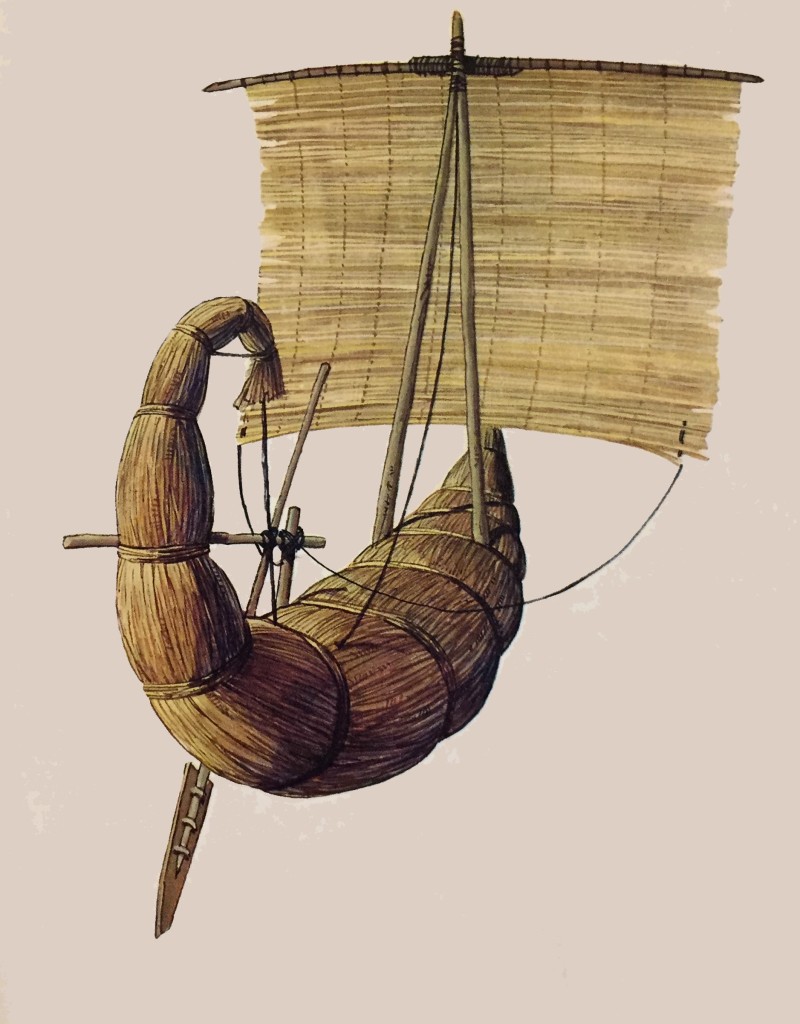
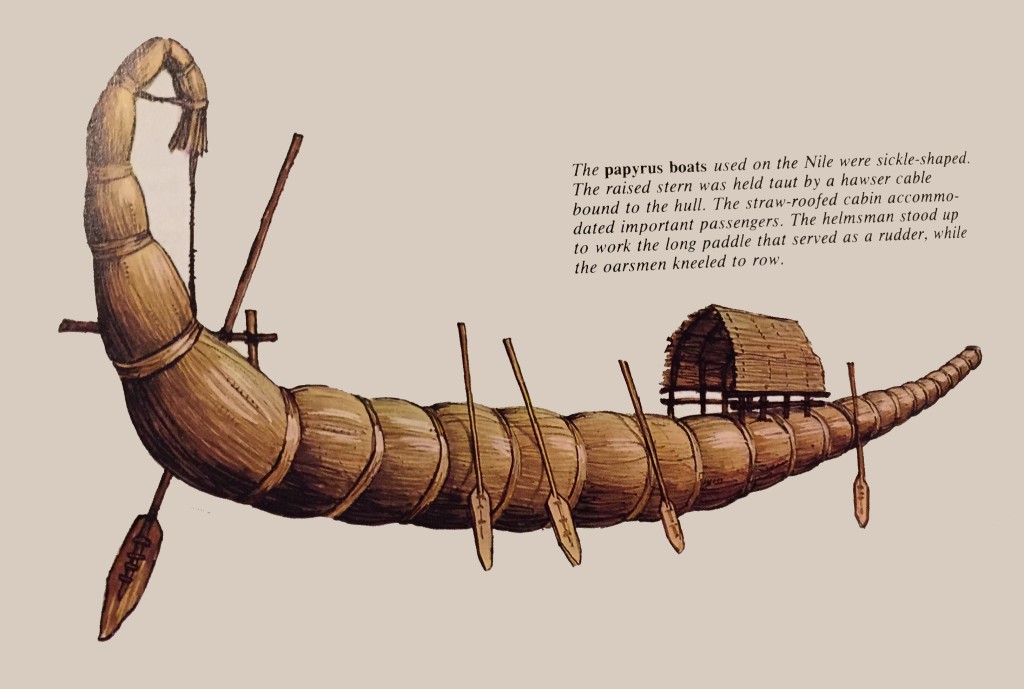
The introduction of wooden vessels in Egypt is thought to have occurred after the development of copper tools sometime in the fourth millennium, possibly as early as 3400 BCE. The first engravings of wooden boats date to around 2800 BCE and there is hieroglyphic documentation that Pharaoh Sahure sent an expedition to Syria to obtain rare wood sometime in the early third millennium BCE (Angelucci & Cucari, 1975, p. 18 -19).

The benefits of wood over papyrus are that it is stronger, more versatile, has greater longitudinal strength, and a true displacement hull can be made from it. Interestingly, the wooden boats on the Nile had upturned ends similar to the reed boats. It has been thought that the builders retained the papyrus shape at first due to inexperience in working with wood, and later, as an imitation of the earlier reed boats and for funeral boats. The upturned stem and stern pieces on these wooden boats also included stylized finial carvings in the shape of papyrus leaves (Paine, 2013, p. 42).
Working Boats on the Nile
Given the importance of the Nile and boats to Egyptian society, it makes sense that they used both of them in the construction of their famous stone monuments at places such as Memphis and Thebes. Since stone was not available at these burial sites, that means the Egyptians had to move thousands of tons of stone from their quarries. The granite likely came from Aswan, limestone from farther north, and quartzite from both Memphis and Aswan. Paine (2013) describes the logistics of using barges to move two granite obelisks weighing 330 tons each from Aswan to Thebes during the reign of Queen Hatshepsut around 1500 BCE. These barges are depicted on bas-reliefs at the temple of Der-el-Bahari. After the stone for the obelisks was moved to the water’s edge via rollers, a canal was dug underneath them and the barges, loaded with twice the weight of their intended cargo to give them a heavy draft, were moved underneath the obelisks. In the first century, Pliny the Elder described the process of getting the stone onto the barges when he wrote, “the ships were able to come beneath the obelisk, which was suspended by its ends from both banks of the canal. Then the blocks were unloaded and the ships, riding high, took the weight of the obelisk.” It is postulated that the materials used to build the pyramids were transported in the same fashion several millennia earlier as well as the Colossi of Memnon after that (p. 46 – 47). Angelucci and Cucari (1975) describe the barge used to carry the obelisks as the largest boat on the Nile at the time of the Pharaohs, weighing in at 700 tons and requiring 27 smaller vessels to pull it, each with 30 oarsmen (p. 21). However, other sources disagree and contend that such stones were too large to move by boat and were likely moved overland instead (Mark, 2017).
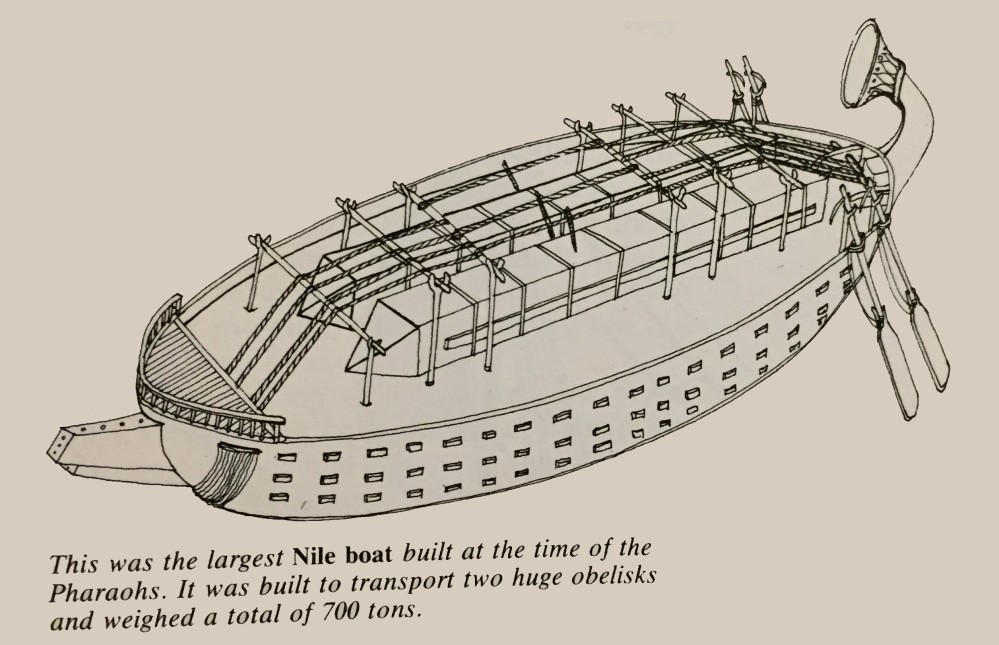
Whereas ceremonial vessels used planks of imported cedar, ordinary boats used local materials such as sycamore figs and acacia. Since these trees do not grow in very straight or long lengths, Herodotus noted that “the method of construction is to lay them together like bricks.” Inscriptions from the Sixth Dynasty noted cargo vessels made of acacia wood with a length of 31 meters (as cited in Paine, 2013, p. 47). Furthermore, since these early wooden boats did not possess ribs or a keel, the planks were joined together with pegs or notches. The boats themselves were flat-bottomed and held firm by their tension and the pressure of the water. Later boats did have keels and a thick hawser cable that ran from bow to stern, propped up and tensioned by rods. This prevented the middle of the boat from collapsing. Masts were often in a bipod configuration to distribute the weight more evenly. The mast on Pharaoh Sahure’s boat could be lowered, possibly to make rowing easier (Angelucci & Cucari, 1975, p. 19).
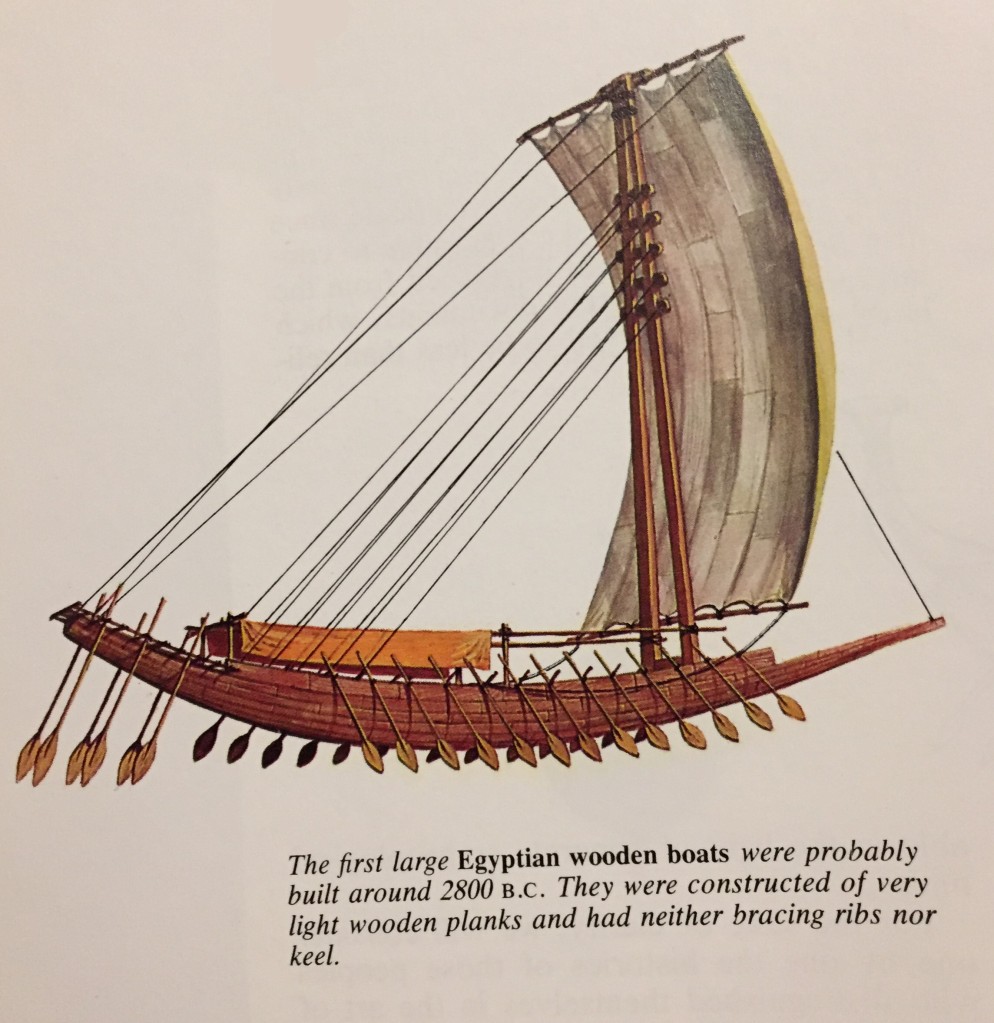
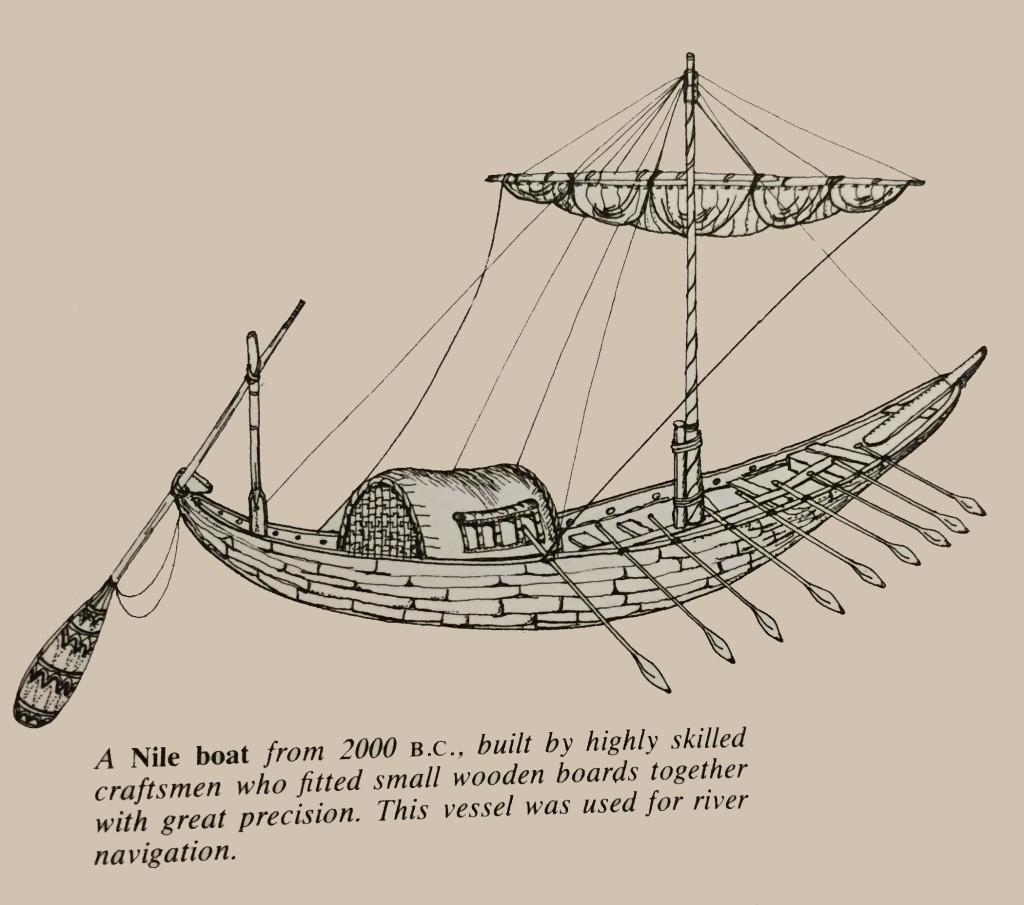
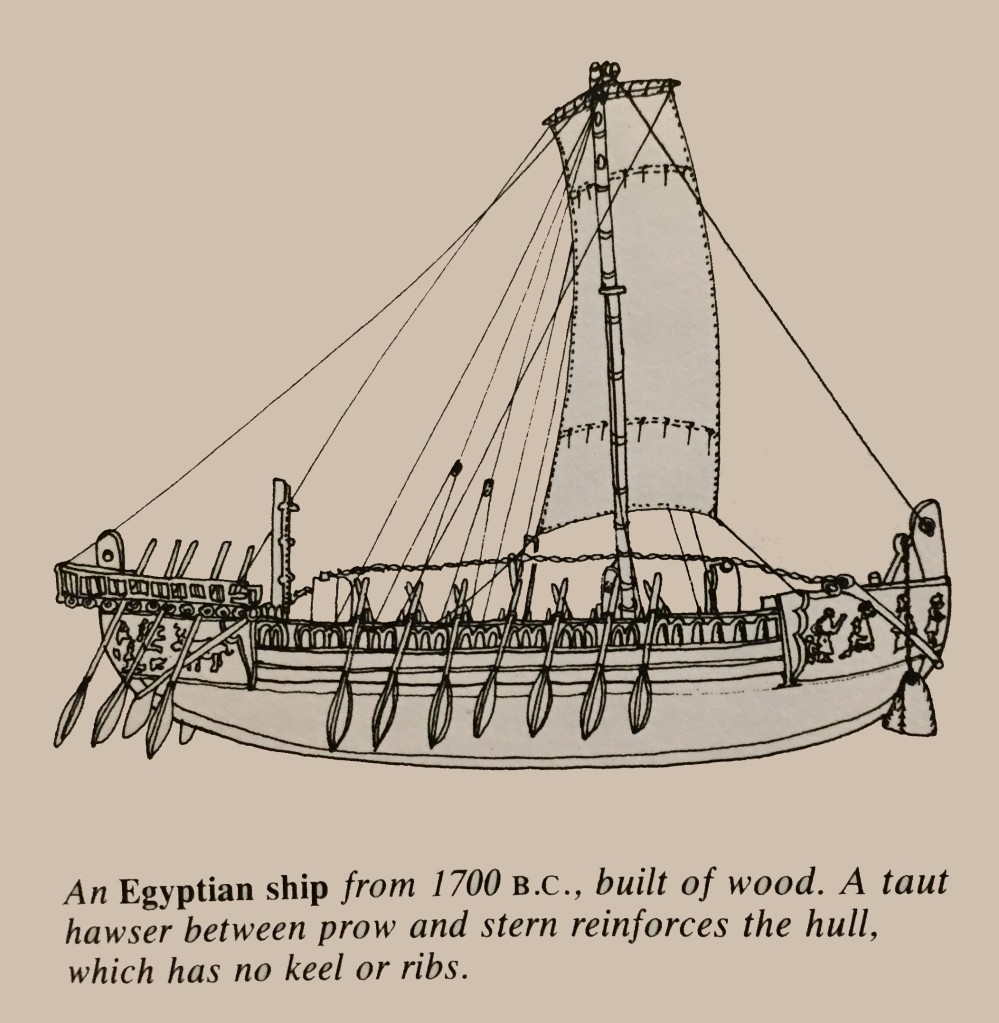
More accurate documentation of Egyptian boats comes from the models found in Mektire’s tomb who was buried in the early 2nd millennium BCE. Some of the models lack the hawser cable and instead have a beam running from stem to stern with pairs of frames branching off and movable planks between them. Perhaps the first example of dunnage. The two steering paddles have been replaced with a single paddle over the stern. The mast is also no longer a bipod and has stays and shrouds.

Along with wooden models, there were papyrus models in Mektire’s tomb indicating that the former did not completely replace the latter (Angelucci & Cucari, 1975, p. 20).
Ceremonial Boats

Aside from working boats, archaeologists have discovered various buried vessels, seemingly serving a ceremonial purpose. One of the most significant discoveries occurred during a dig around the Great Pyramid of Giza in 1954. Archaeologists opened up a rectangular pit and found a perfectly preserved 44-meter-long disassembled vessel dating from around 2500 BCE. The boat was likely built for Khufu, the second pharaoh of the Fourth Dynasty. Over 1200 pieces of wood were found, ranging from small pegs to timbers longer than 20 meters in length. It was determined that 95% of the wood was cedar, imported from Lebanon, and the rest was domestic acacia, sidder, and sycamore. Reconstruction of the vessel took 13 years and it was finally opened to the public in 1982 (Paine, 2013, p. 37 – 38).

Studies of the Khufu ship indicate that it is of a “shell-first” construction where hull planking is attached edge-to-edge to form a shell before the frames are inserted. The hull planks were fastened by cordage running perpendicular (transverse) to the centerline of the vessel. In contrast to other boat-building traditions where planks were sewn together along the seams, the Egyptians used transverse lashings. The reasons for this are unknown, but it is a more efficient use of cordage than seam sewing. To overcome the problem of seams opening up, the planks were irregular in shape and fit together like a puzzle. The cordage ran from gunwale to gunwale and passed through shallow channels in the planks that were cut at an angle so as not to penetrate the hull. In total, the Khufu ship used about 5,000 meters of cordage passing through 276 channels. Caulking was not needed due to the fact that wood swells and the cordage shrinks when wet to form a watertight fit. It is theorized that the Khufu ship was meant to either carry the pharaoh’s body to Giza or that it was used by Khufu to visit holy sites during his lifetime. In any case, the Egyptians made use of boats both for rituals and work (Paine, 2013, p. 44 – 45).
Military Boats
There is some evidence of an Egyptian navy given that reliefs from the 12th century BCE do depict naval battles against the Sea Peoples during the time of Ramses III. The vessels, probably influenced by foreign boats, appear to have boards around the sides of the hull to protect the rowers, a crow’s nest atop the mast, and sails capable of being shortened without the yards being lowered (Angelucci & Cucari, 1975, p. 21).
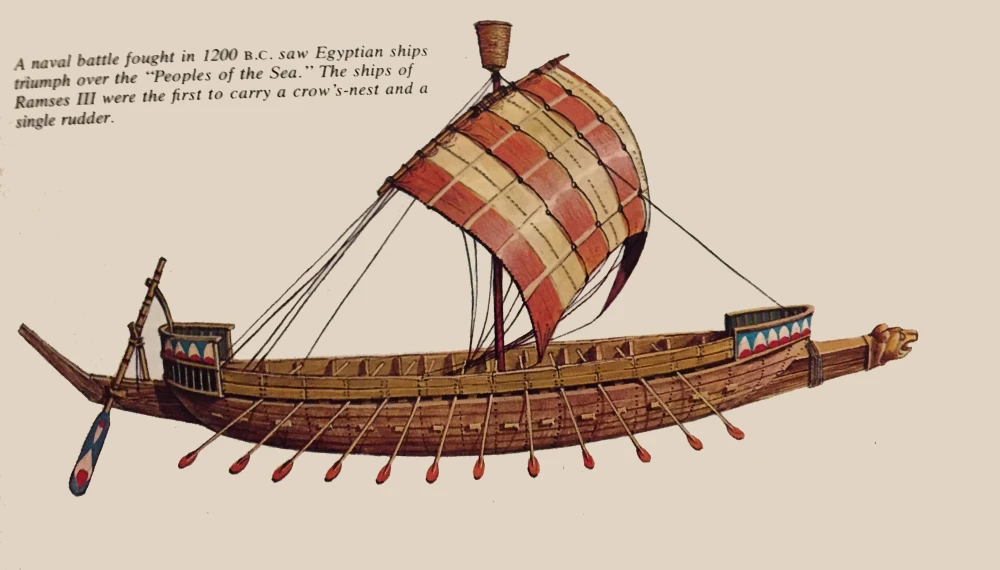
Trade in Egypt
The Egyptians developed extensive trade links throughout the region during the Old Kingdom period (2686-2181 BCE) to include West Asia, the Sinai Peninsula, the Red Sea, and south of the First Cataract. Timber was imported from Byblos on the Lebanese coast while turquoise, copper, and malachite were mined in the Sinai desert. East of the Nile, the land provided copper, granite, and limestone, as well as access to ports on the Red Sea. South of the First Cataract lies an area known as Nubia or Kush which provided gold and open routes to central Africa (O’Brien, 2010, p. 30). On the Mediterranean coast, one account from the delta city of Piramesse built in the 1200s BCE noted the abundance and variety of foods being loaded and unloaded from boats. These included barley, emmer wheat, onions, leeks, lettuce, pomegranates, apples, olives, figs, wine, honey, fish, and salt (Paine, 2013, p. 48).
The earliest references to overseas Egyptian trade come from reliefs from the Fifth Dynasty. One scene in Pharaoh Sahure’s temple shows six ships returning from the Levant with foreigners wearing Syro-Canaanite clothes. However, the goods they carried suggested that they were traded through the Levant. The Red Sea also provided a substantial amount of trade for the Egyptians who made several expeditions to the land of the Punt (possibly Ethiopia or Somalia) to bring back various kinds of goods (Angelucci & Cucari, 1975, p. 20). One of the best documented of these expeditions occurred during the reign of Hatshepsut around 1470 BCE as is depicted on her mortuary temples. The expedition is shown as using five ships, each about 23 meters long. What is interesting is that the ships were likely carried overland from the Nile, 150 kilometers to the Red Sea to be reassembled. From there, they made their journey south. Upon their return, the cargo included myrrh trees, and according to the Tales of a Shipwrecked Sailor, exotic goods such as cosmetics, frankincense, ebony, ivory, gold, cinnamon wood, lapis lazuli, apes, monkeys, dogs, cattle, and slaves (Paine, 2013, p. 51 – 53). However, according to Seth Richardson, it is believed that such tales were embellished in royal accounts (as cited in Parker, 2012, p. 28).

Egyptian expansionist policies appear to have been fairly limited although evidence suggests that they had trade contacts throughout the Levant and up into Mesopotamia. During the reign of Kamose during the 1560s BCE, a series of riverine campaigns pushed the Hyksos people out of the Nile delta and into Canaan (Paine, 2013, p. 54 – 56). The subsequent establishment of the New Kingdom (1550-1069 BCE) resulted in a cultural renaissance and expansion. Thutmose I (r. 1504-1492 BCE) campaigned as far as the Euphrates and by the time of Thutmose III (r. 1479-1425), the Egyptians controlled several Levantine ports such as Byblos, Ulazza, and Ardata. They also secured the area of Nubia up to the Fourth Cataract. During the reign of Sety I (r. 1294-1279), the Egyptians entered into competition with the Hittites over control of the Levant. After the Battle of Qadesh in 1275, Damascus was under Hittite control. Meanwhile, the recovering Assyrians captured the Mitannian capital of Washukanni and became a power on par with Egypt. They would later sign a non-aggression pact with the Egyptians which brought stability to the region (O’Brien, 2010, p. 37).
Conclusion
Ancient Egyptian culture is more well-known for its monuments in the desert than for its trade and boats along the Nile River. While the Egyptians may not have ranged as far as the peoples of the Pacific, we see no less ingenuity in their adapting to their environment. The people of ancient Egypt made phenomenal use of a river in the middle of the desert to build their civilization around and trade with other people in the region.
References
Angelucci, E. & Cucari, A. (1975). Ships. Milan, IT: Arnoldo Mondadori Editore.
Lavery, B. (2019). A Short History of Seafaring. New York, NY: DK Publishing.
Mark, J. J. (2017, June 05). Colossi of Memnon. Ancient History Encyclopedia. Retrieved from https://www.ancient.eu/Colossi_of_Memnon/
O’Brien, P. (Eds.). (2010). Atlas of World History. New York, NY: Oxford University Press.
Paine, L. (2013). The Sea and Civilization: A Maritime History of the World. New York, NY: Alfred A. Knopf.
Richardson, S. (2012). Egypt: Gateway to Africa. In P. Parker (Eds.), The Great Trade Routes (pp. 27-29). Annapolis, MD: Naval Institute Press.
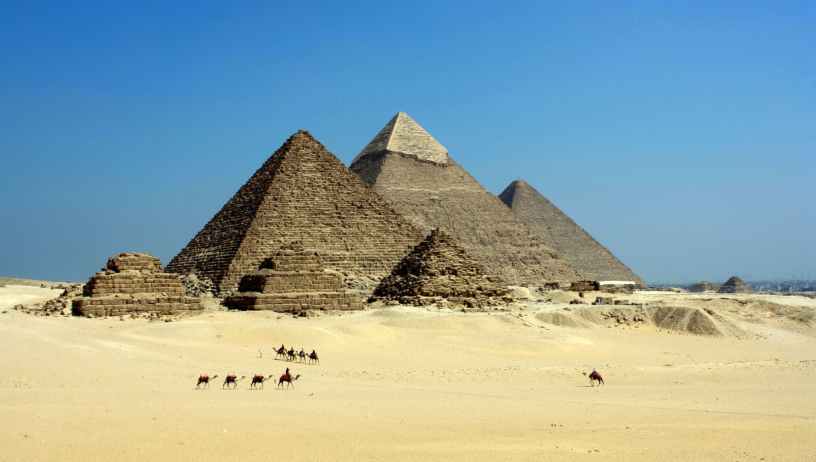
Good information and nice illustrations. Thanks for posting!
LikeLike